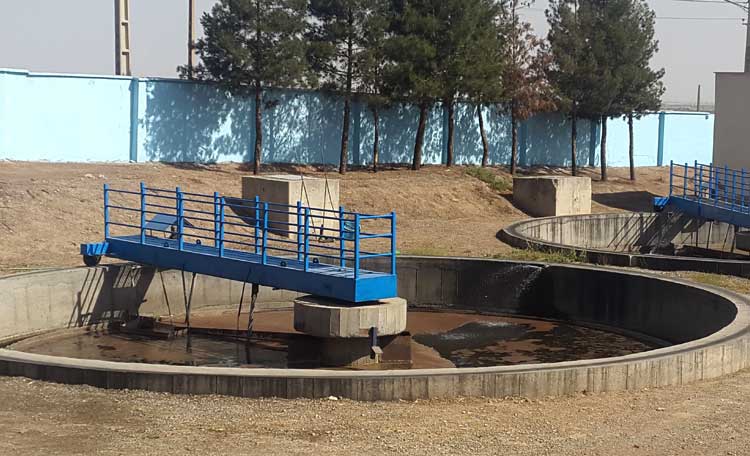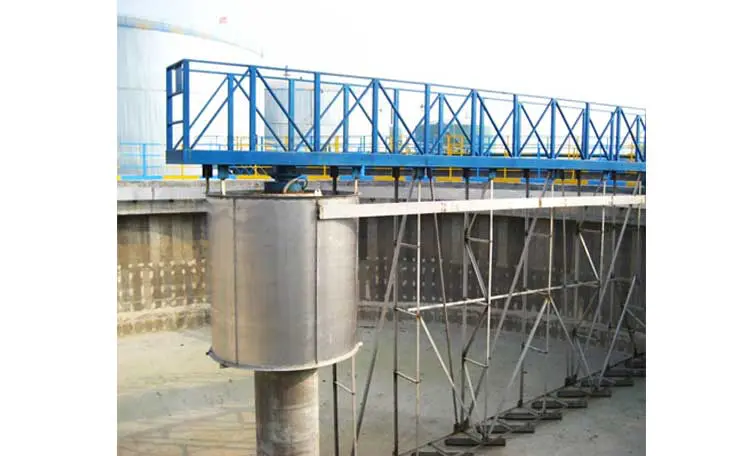Types of Sludge Scraper Bridge
Sludge Scraper Bridge is designed and manufactured according to the type of ponds and each of them has several differences in terms of general shape and how to move and collect sediment and sludge. Depending on the type of sedimentation ponds, sludge removal bridges can be divided into the following groups:
Rotating Sludge Scraper Bridge
Rotating Sludge Scraper Bridge is located on the cylindrical ponds and is designed and produced with two types of half bridge and full bridge. After the sediment suspended in the sewage at the bottom of the ponds, the blade connected to the bridge is placed at the bottom of the pond and transmits the sludge to the center by circular motion and creating a centrifugal force. Finally, the sludge is collected and discharged in the center of the pond.
Traveling Sludge Scraper Bridge
In addition to cylindrical ponds, rectangular sedimentation ponds are also used in some refineries and industrial environments. Sludge Scraper Bridge installed on this type of pond has a blade the width of the pond and moves horizontally and directly. The movement of the blade at the bottom of the pond causes the layers of sludge to separate from the bottom and be transferred to the end of the pond and finally emptied.
Sludge Scraper Bridge design
In designing Sludge Scraper Bridge, in addition to carefully selecting its important parts and components, it is necessary to pay attention to their material and the speed of rotation and movement of the blades. In the general structure of Sludge Scraper Bridge, there are various components such as round floor bearings, grating, blade, sludge blade slipper and electrical panel, bearing and body. The most important point is the material used for each of these parts, which has a direct impact on the efficiency and longevity of the bridge. Due to the organic matter and chemicals in the wastewater, it is necessary for the blades and the parts that are placed in the pond to be resistant to corrosion and rot. Stainless steel is a good option for designing these parts and the body of the bridge can also be designed from fiberglass.
In addition to the above, the rotation speed and movement of the sludge scraper blade are other factors that should be considered during the design of these bridges. In the products produced by Seven Industrial Group, the rotation speed of the bridge is adjustable and according to the capacity of the pond and the amount of sludge and sediment in them, a suitable speed can be selected. In most cases, the rotation speed is in the range of 0.5 to 3 revolutions per minute. It should also be noted that in the design of rotating bridges, the blade has a slope of about 8% towards the center so that the transfer of sediment can be done easily. In designing a Sludge Scraper Bridge, it is necessary to pay attention to the width of the bridge and placing a suitable space for human movement on it.





Leave a Reply